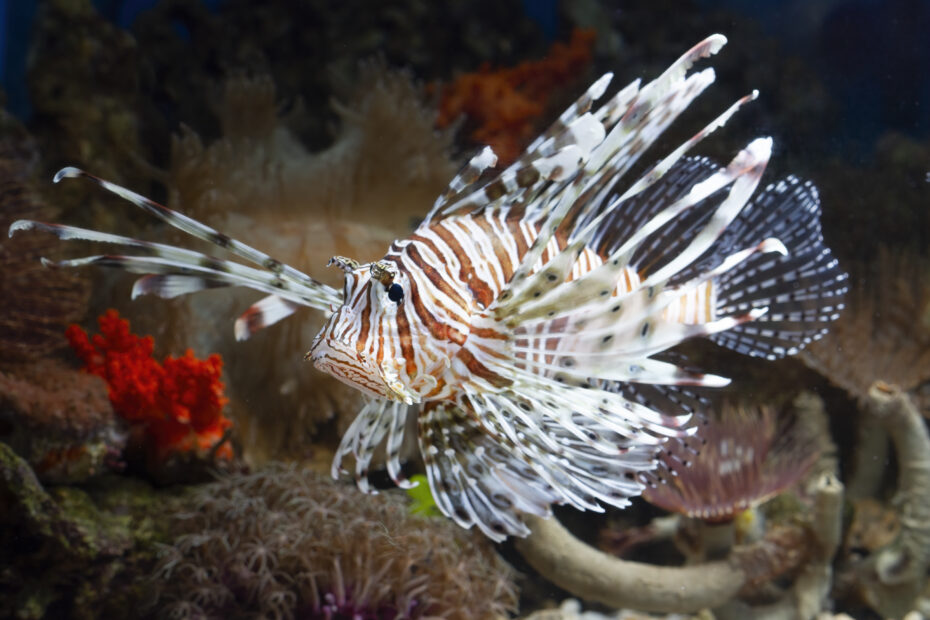When keeping an aquarium, especially with saltwater species, it’s essential to be aware of fish that can pose risks either to humans, other tank inhabitants, or both. Here’s a list of the top 10 most dangerous aquarium fish:
1. Stonefish (Synanceia spp.)
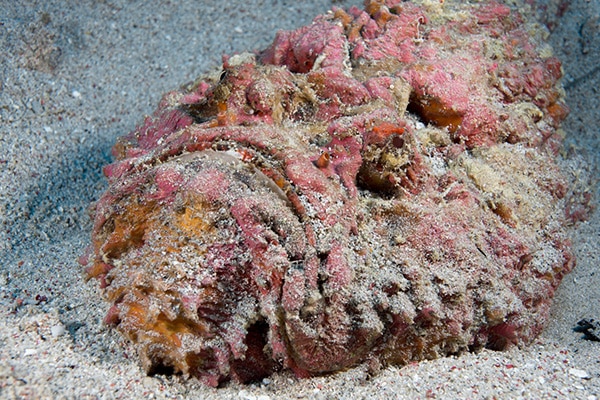
- Danger: The stonefish is the most venomous fish in the world. Its venomous spines can cause extreme pain, swelling, tissue necrosis, and even death if not treated quickly. Due to its ability to camouflage, it’s easy to accidentally touch it when cleaning the tank, making it highly dangerous for aquarium keepers.
2. Lionfish (Pterois spp.)
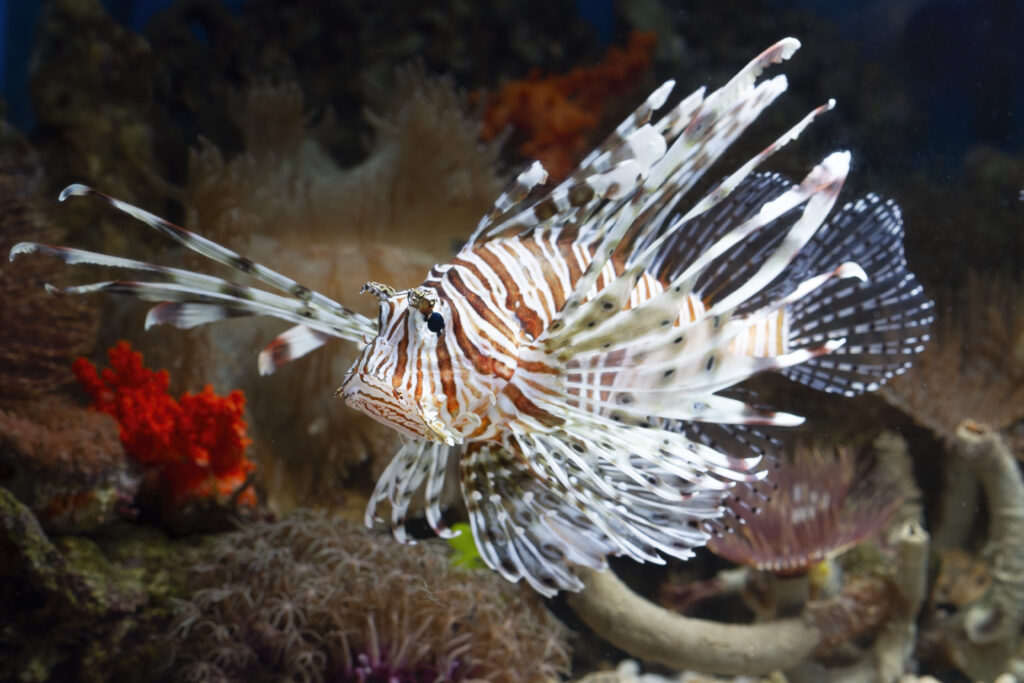
- Danger: Known for their venomous spines, lionfish can deliver a painful sting that causes intense pain, swelling, and, in some cases, systemic effects like nausea or breathing difficulties. While rarely fatal, a sting from a lionfish can result in serious medical issues and requires immediate attention.
3. Pufferfish (Tetraodontidae family)

- Danger: Pufferfish contain tetrodotoxin, a potent neurotoxin. While the danger comes primarily from ingesting the fish, they are still considered dangerous in aquariums due to their ability to inflate and potentially cause damage if handled improperly.
4. Triggerfish (Balistidae family)

- Danger: Triggerfish, especially species like the Clown Triggerfish (Balistoides conspicillum), can be highly aggressive and territorial. They have powerful jaws with sharp teeth that can cause serious injury to humans if they bite, and they are known to attack divers or aquarium owners during feeding or cleaning.
5. Moray Eel (Muraenidae family)
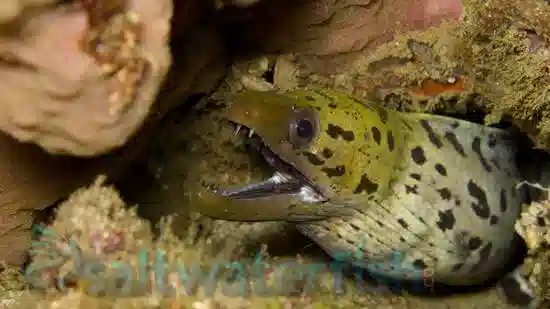
- Danger: Moray eels are known for their strong jaws and sharp teeth. They can deliver deep bites that may result in serious wounds and infections. Moray eels can also be territorial and may bite if they feel threatened or are startled during tank maintenance.
6. Fangtooth Blenny (Meiacanthus spp.)
- Danger: These small fish pack a punch with venomous fangs used to deter predators. While the venom is not lethal to humans, it can cause significant pain and swelling. Their bite is more of a defense mechanism, but it’s still something to be cautious of.
7. Scorpionfish (Scorpaenidae family)
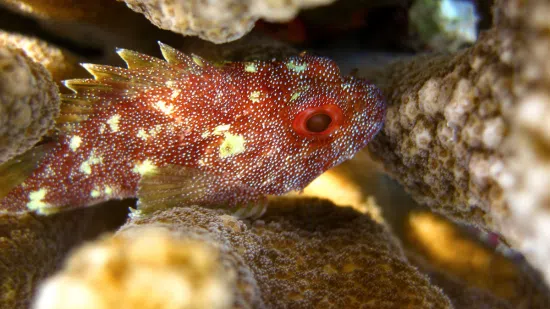
- Danger: Closely related to the stonefish, scorpionfish have venomous spines that can cause intense pain, swelling, and potential complications. They are also well-camouflaged, making them easy to overlook in the aquarium and increasing the risk of accidental stings.
8. Boxfish (Ostraciidae family)
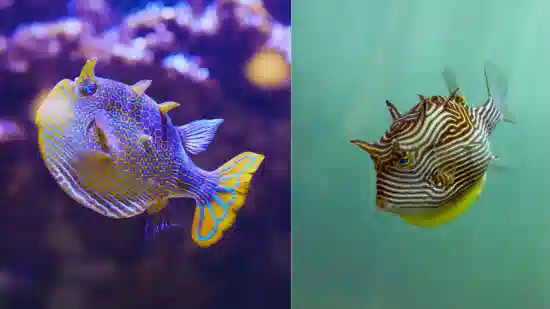
- Danger: Boxfish secrete a toxic substance called ostracitoxin when stressed, which can be lethal to other tank inhabitants, including the boxfish itself. While not dangerous to humans directly, this toxin can wipe out an entire tank if the fish becomes stressed or dies, posing a significant risk to the aquarium environment.
9. Surgeonfish (Acanthuridae family)

- Danger: Surgeonfish, including popular species like the Blue Tang, have sharp spines or “scalpels” near the base of their tails that can cause deep cuts. While they are generally peaceful, they can become aggressive and use these spines if threatened.
10. Electric Catfish (Malapterurus electricus)
- Danger: The electric catfish can deliver a powerful electric shock, strong enough to stun prey or deter predators. While shocks from smaller individuals are usually not lethal to humans, they can still cause pain, surprise, and potential secondary injuries (e.g., dropping the fish or tank equipment).
Conclusion
These dangerous aquarium fish require careful handling and specific knowledge to keep safely. It’s crucial for aquarium owners to be aware of the risks associated with each species and to take appropriate precautions during feeding, cleaning, and maintenance to avoid injuries or harm to other tank inhabitants. If you’re considering keeping any of these species, ensure you have the experience and knowledge to manage them safely.
